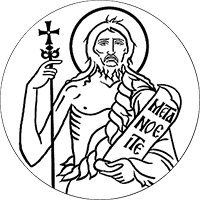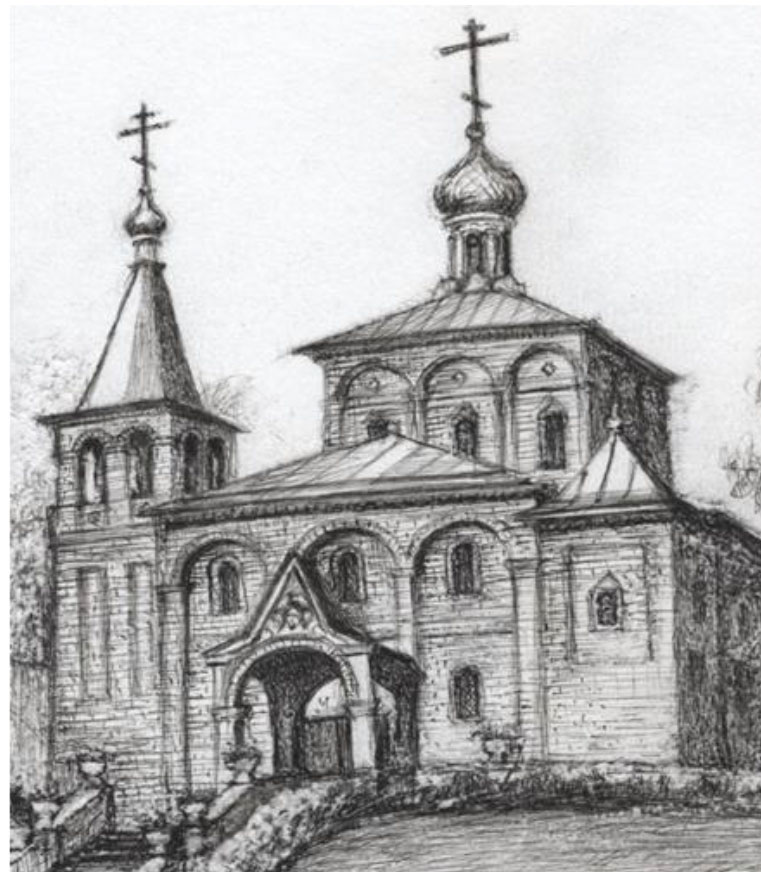You are here
Holy Equals-to-the-Apostles Emperor Constantine and Helen,his mother
21 May/3 June
The Emperor Constantine the Great was the son of Constantius Chlorus, who ruled the western part of the Roman Empire (Gaul and Britannia), and Helen, the holy equal of the Apostles. In accordance with the desire of the Emperor Diocletian, he was taken from his parents in his young years (18th year), and lived as a hostage at the court in Nicomedia. When Diocletian abdicated the throne, Constantine returned to Gaul and in 306 AD (after the death of the Emperor Constantius) was proclaimed emperor.
He became disposed to accept Christianity by his mother. His father, although he was a pagan, nevertheless protected the Christians, seeing that Christians were faithful servants and honest citizens. There were Christians in various posts at the court of Diocletian during the time when he had not yet begun to persecute the Church, and Constantine had many occasions to become assured of their honesty and devotion to duty. After that, he saw the horrors of the persecution and the unusual steadfastness of the confessors of Christ, and this also predisposed him in their favor. Subsequently, Constantine himself acknowledged that his stay at the court of Diocletian promoted his conversion to Christianity: "I become estranged from those who until then had been rulers," he said, "because I saw the savagery of their ways."
Constantine, whose character was active, belicose, accessible to all and generous, farsighted and perspicacious, manifests the traits of a world class genius, and it was not in vain that he was chosen by God's Providence to accomplish the greatest turnabout in the empire and in the whole world.
The Emperor Constantine struggled in particular with three enemies during his reign; and during this struggle he gradually, but decisively became inclined to accept the holy faith.
In 308 AD, he emerged successful from the struggle with the Emperor Maximian Hercules and hastened to express his gratitude to the deity by rich sacrifices in the temple of Apollo. In this, the dominate trait in Constantine's character was revealed: although he still remained a pagan, nevertheless, he was a religious man and attributed the cause of his successes to help from on high.
In 312 AD, a new war arose between the Emperor Constantine and the Ceasar Maxentius, the son of Maximian. During this war, not long before the decisive battle, Constantine saw with his own eyes a shining cross in the sky with the inscription: "By this conquer" (NIKA in Greek). That night, the Lord appeared to him in a dream with the same sign of the Cross and said that by this sign he would defeat the enemy. On the following day, by Constantine's order, images of the holy Cross were made on all the standards of his army.
Having gained the victory over Maxentius, Constantine triumphantly entered into Rome and there commanded that his statue be set up on square with the Cross in its right hand and with the inscription: "By this saving sign, I saved the city from the tyrant's yoke". After this victory, the Emperor Constantine, together with his brother-in-law, Licinius, published a first manifesto in Milan that permitted everyone to accept Christianity without fear. In a second manifesto, signed by them in 313 AD, it was ordered that the places of assembly for Divine services and all the real estate taken away during the persecutions be returned to the Christians.
Meanwhile, the friendly relations between the Emperors Constantine and Licinius fell apart little by little and turned into an open conflict. This conflict was to decide the fate of Christianity in the Roman Empire, because Licinius, suspecting the eastern Christians of greater attachment to Constantine, began at first to oppress them, and then turned to openly persecuting them, while Constantine clearly protected the Christians. Both emperors prepared for a decisive battle, each in accordance with his faith. The oracles foretold victory to Licinius, while the Christians prayed for Constantine. God gave the victory to Constantine in the Battle of Adrianople (322 AD). Licinius was deprived of his throne and his life. Constantine became the sole ruler of the empire and Christianity triumphed.
The Emperor Constantine dedicated his whole life to the good of the Church and did so much good for her that he merited the appellation "Equal of the Apostles". From his time, state institutions, laws and military service began to be oriented toward the requirements which are contained in Christianity.
Besides the edicts mentioned, one may indicate the following measures and actions of the Emperor Constantine on behalf of Christianity in chronological order: He stopped the pagan games; freed the clergy from civic obligations and Church lands from general taxes; abolished execution by crucifixion; permitted the freeing of slaves at churches without special formalities, which were very difficult in the civil courts; forbade private persons to offer sacrifices to idols and to turn to divination at home, reserving this right only to societies; commanded that Sunday be celebrated throughout the whole empire; in protecting Christian virgins, he abolished the laws which the Romans had against celibacy; he granted the Church the right to receive property by bequest; permitted Christians to occupy the highest state posts; ordered Christian churches to be built and forbade imperial statues and images to be carried therein as was customary in pagan temples.
The Emperor Constantine encountered opposition in Rome most of all, where the pagan party was powerful. This opposition by the pagans was revealed in particular during the celebration by Constantine of the twentieth anniversary of his reign and cooled him towards the former capital of the state. Finally, he completely left Rome, founded a new Christian capital on the shores of the Bosporus and invited Christian bishops to solemnly consecrate it, having named it Constantinople. In place of pagan temples in this new capital of the empire they began to raise up Christian churches, and in place of statues of pagan gods sacred depictions.
The Emperor Constantine regarded the disturbances which incited in the Church the schism of the Donatists and especially the heresy of Arius with lively attention and in every way tried to reconcile those who were divided. One of Constantine's greatest services was the convocation of the First Ecumenical Council in the city of Nicaea in 325 AD.
Devoted to the Church with all his soul, Constantine, however, put off receiving baptism until the last days of his life, in accordance with the custom of that time,. When he sensed the approach of death, then he received this great mystery with reverence and peacefully died during prayer on the 21st of May, 337 AD.
* * *
The Empress Helen's main service was that she disposed her son Constantine toward the Christian faith at a time when other youths of noble birth were being brought up in the pagan spirit and despised Christianity. Her second service was the finding of the Lord's Cross. In memory of this event, the Church established the feast of the Exaltation of the Cross of the Lord (14/27 September), one of the twelve great feasts. During the reign of Constantine, the name of the city of Jerusalem was restored in place of Elia Capitolina, which it had been given under the Emperor Hadrian (117137 AD).
The Empress Helen built several churches in the Holy Land: On Golgotha, the Church of the Resurrection (and Sepulchre) of the Lord, where each year on Great Saturday the gracefilled fire comes down; on the Mount of Olives (where the Lord ascended to heaven); in Bethlehem (where the Lord was born in the flesh) and in Hebron at the Oak of Mambre (where God appeared to Abraham).
PARISH LIFE
RECENT VIDEOS
Address of our Cathedral
Subscribe to our mailing list
While all the materials on this site are copyrighted, you may use them freely as long as you treat them
with respect and provide attribution on the Russian Orthodox Cathedral of St.John the Baptist of Washington DC.









